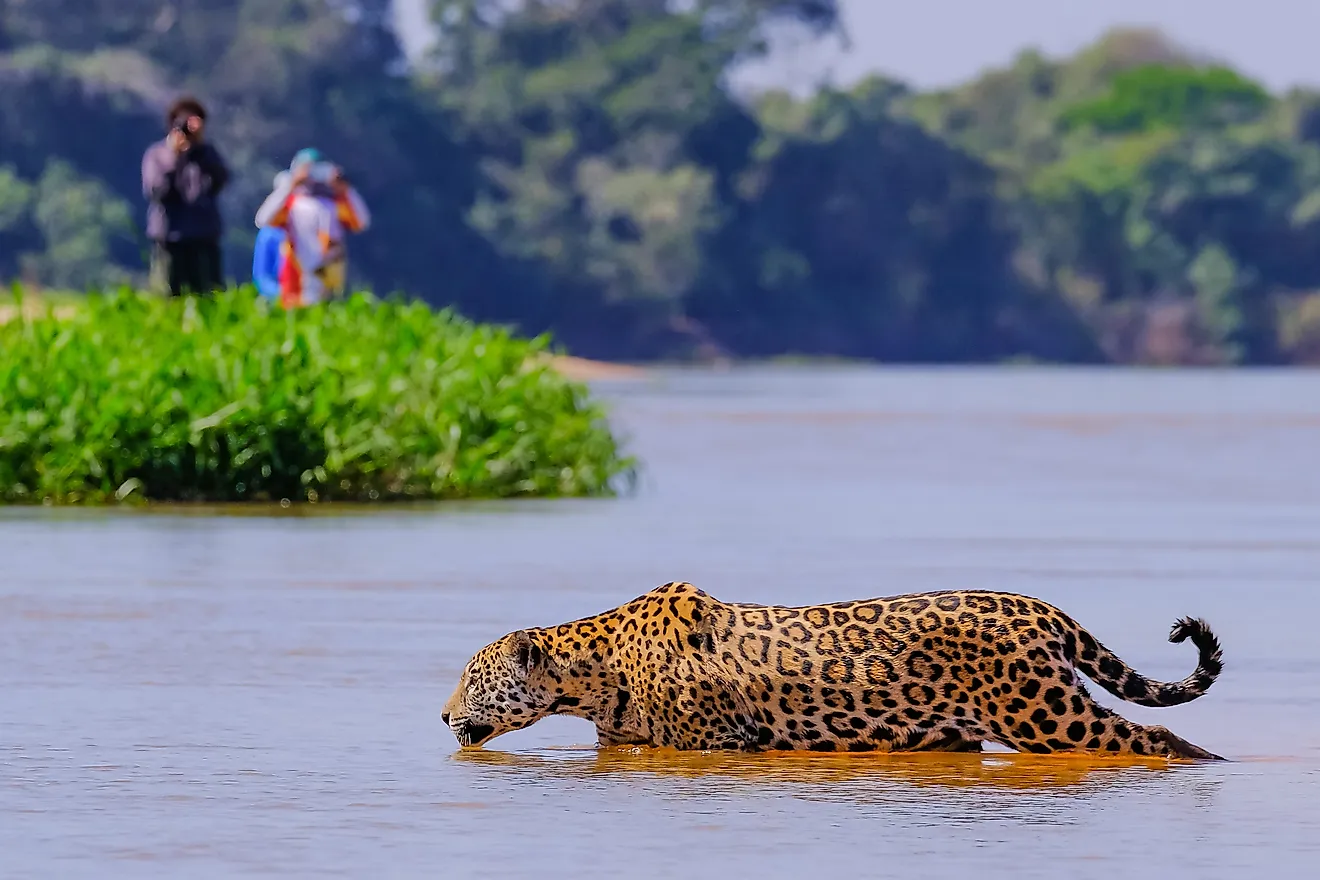The Kalahari Desert
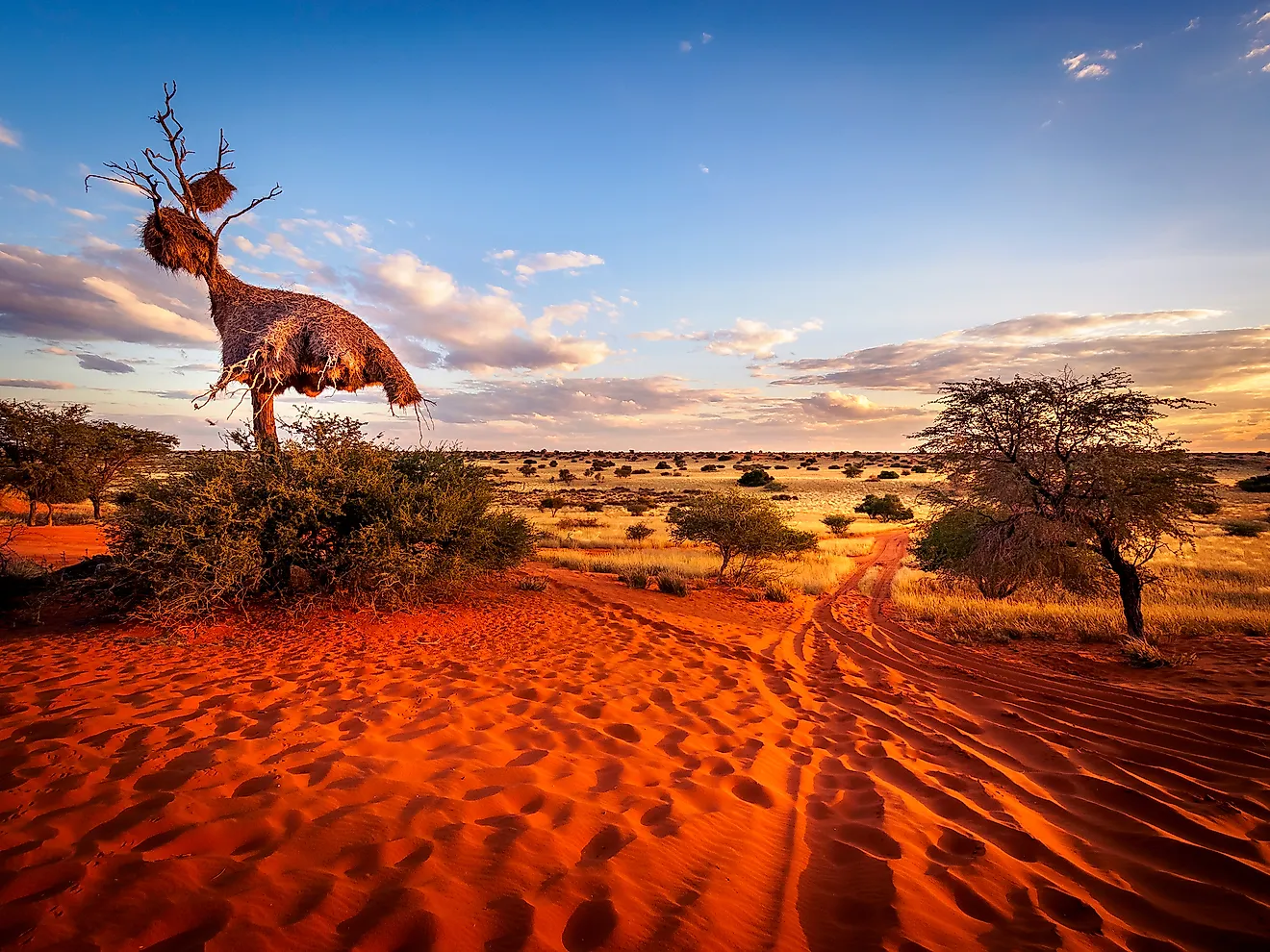
- The Kalahari is the second largest desert on the continent of Africa—only trailing behind the Sahara—and sixth largest in the entire world.
- The northeastern part of the Kalahari is technically not a desert since it receives double the amount of rain a typical desert should receive.
- The construction of diamond mines in the Kalahari Desert have forced the local San peoples to either relocate or live under the occupation of these mining companies.
Content:
- Where Is The Kalahari Desert?
- Topography
- Climate
- Drainage And Soils
- Plants And Animals
- Historical Significance
- Human Settlements
- Threats To The Environment
- Political Disputes
Where Is The Kalahari Desert?
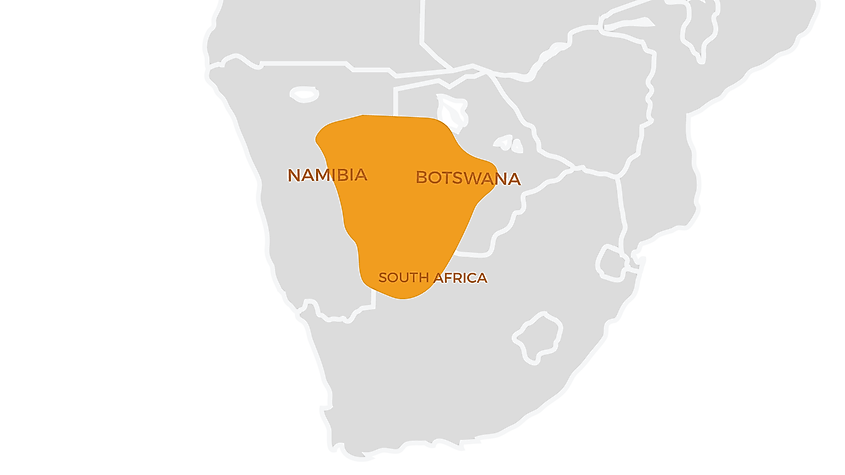
Over one-third of Africa is covered by desert. The Kalahari is the second largest on the continent—only trailing behind the Sahara—and sixth largest in the entire world. It spans approximately 360,000 square miles (932,000 square km) of land, occupying up to 70% of Botswana, an eastern portion of Namibia, and the northern part of South Africa. To the west, it merges with the coastal desert of Namib.
Topography Of The Kalahari Desert
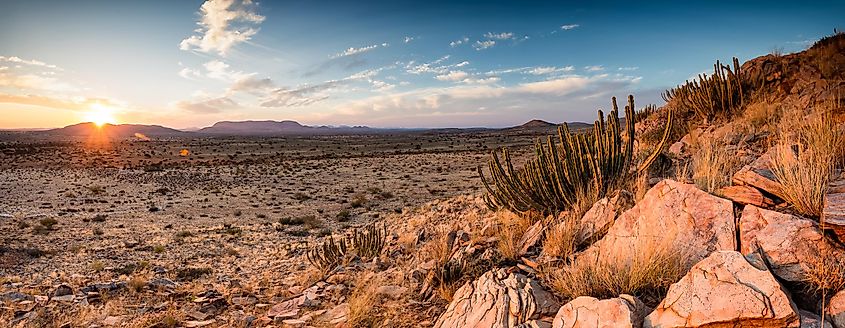
For the most part, the topography of the Kalahari Desert can be characterized by its three distinct features: sand sheets, sand dunes, and salt pans.
Located in the eastern part of the Kalahari, the sand sheets are as old as 2.5 million years. As their name implies, they are vast stretches of sand shaped by the wind to resemble calm undulating waves. Unlike sand dunes, they are generally not very high, but can have great depths exceeding more than 200 feet.
The Kalahari sand dunes make up the largest continuous expanse of sand on Earth, longer even than the dunes of the Sahara. They typically run from the north to the Namib Desert in the west. Each dune measures roughly one mile long and can reach up to 200 feet high.
Thousands of years ago, the Kalahari Desert was bursting with life due in part to the number of lakes snaking throughout the land. Over time, these bodies of water dried up, leaving behind wide salt pans, flat surfaces of white earth devoid of vegetation.
Because of its rough terrain, the Kalahari does not contain a complex network of highways. What few roads there are connect the various local administrative centers and sparse farmland. A jeep or another durable vehicle is required to cross the desert.
Climate Of The Kalahari Desert
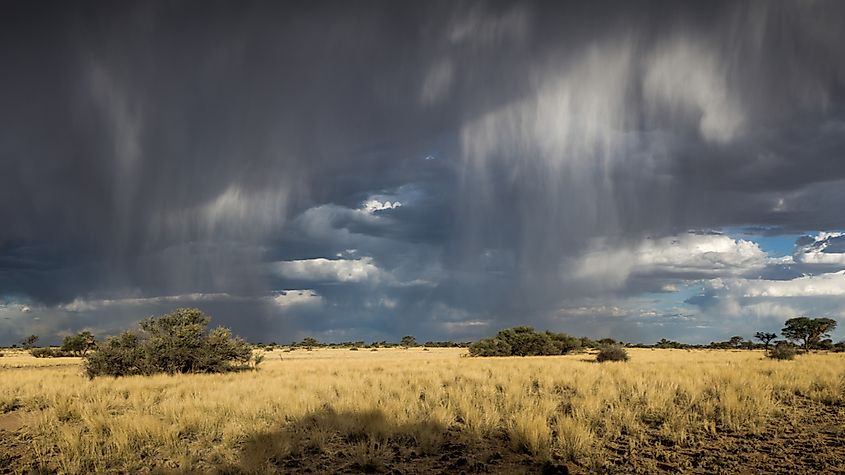
Some experts consider the Kalahari to be a subtropical desert, while others consider it to be an arid, sandy savannah. During the summer, the temperature can rise to a scorching 115 degrees Fahrenheit (46 C), dropping by more than 30 degrees at night. During the winter, the temperature can go as low as 10 degrees Fahrenheit (-12 C), well below freezing.
Generally speaking, areas are considered deserts if they receive less than 10 inches of rain per year, or if the evaporation rate is twice the amount of precipitation. The southwestern part of the Kalahari meets this standard, experiencing periods of thunderstorms in the summer separated by six to eight months of dry spells. The northeastern part, however, is technically not a desert because it receives up to 20 inches of rain every year, a result of moisture moving in from the Indian Ocean.
Drainage And Soils Of The Kalahari Desert
In the southern part of the Kalahari Desert, sparse waterholes are the only source of surface water. The surrounding area is largely devoid of moisture because what little rain it does receive instantly seeps through the deep sand. There are numerous underground water reserves, leftovers of the ancient lakes that used to run through the land. In the north, however, the heavy rainfall tends to feed into various bodies of water, such as the Okavango Delta and the Cuando River.
Soil in the Kalahari Desert is extremely dry. The high levels of saline in the salt pans are often toxic and prevent widespread vegetation. What parts are not covered in dry earth are buried under red sand.
Plants And Animals Of The Kalahari Desert
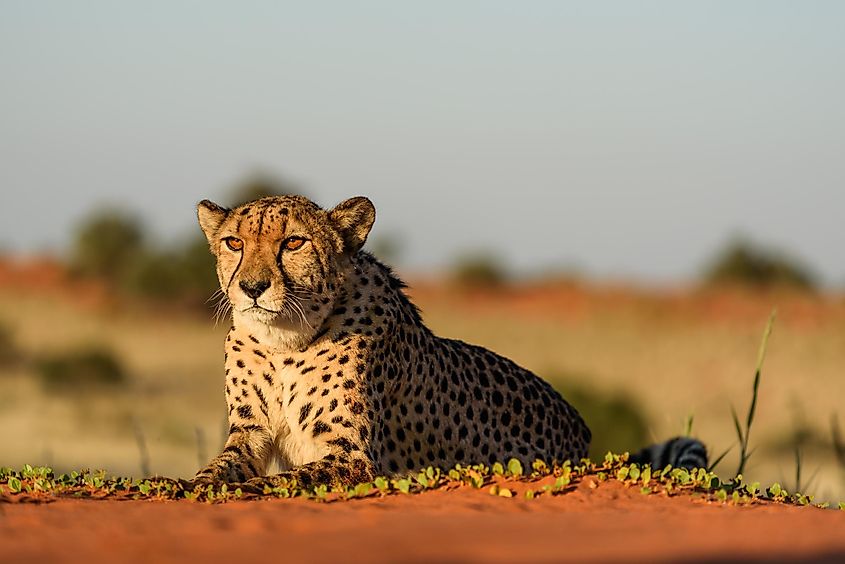
Few plants grow in the dry regions of the Kalahari Desert, mainly just shrubs or tussock grasses. Shallow-rooted plants do not fare well due to the depth of the sand; only trees with deep roots tend to survive. By contrast, wetter regions in the north are home to a diverse range of plant life from camelthorn to shepherd’s trees.
Because of the amount of rainfall in these northern areas, the Kalahari supports more animals than most global deserts. Some of the animals that wander the Kalahari Desert include wildebeest, kudu, eland, and gemsbok, as well as animals popularly associated with African iconography such as lions, cheetahs, hyenas, elephants, giraffes, zebras, warthogs, meerkats, and baboons. Many birds and reptiles also call the Kalahari Desert home.
Historical Significance Of The Kalahari Desert
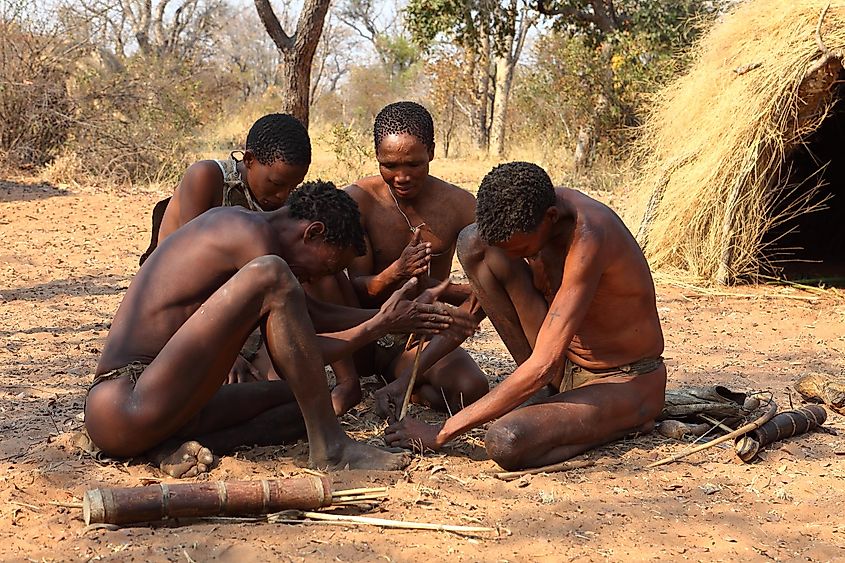
Experts estimate that the Kalahari Desert was formed 60 to 135 million years ago. Its earliest inhabitants were the San peoples, various groups of indigenous peoples residing in southern Africa. Also known as Bushmen, they lived in the Kalahari for tens of thousands of years as hunter-gatherers, isolated from other cultures. Armed with various tools such as bows and arrows, they survived off animals, insects, fruit, and local roots.
They were a semi-nomadic people, relocating in accordance with the seasons. When they did settle, they lived in individual huts built out of easily accessible materials like branches and long grass. They worshipped a god named Chikara who protected them from starvation by allowing himself to be hunted in the form of wild animals.
Approximately 3,000 years ago, the Bantu peoples embarked on a great migration south, absorbing many of the southern cultures. The San resisted by retreating deeper into the Kalahari Desert.
Human Settlements In The Kalahari Desert

Today, the Kalahari Desert is inhabited by the San and Bantu peoples, and numerous Europeans.
As mentioned above, the San peoples were traditionally hunter-gatherers, but few continue to follow the lifestyle of their ancestors. They are no longer nomadic, with many having been resettled to new villages against their will by the Botswana government. They typically raise cattle for a living, in many cases for other people. Regardless, the San are the oldest continuous inhabitants of the region.
The Bantu peoples—Tswana, Kgalagadi, and Herero—are Indigenous ethnic groups who speak one of the 500 Bantu languages. They initially arrived in the desert through migration, but more recently, the Herero relocated to the area as refugees from the German-Herero conflict of 1904-1907. Those not involved in any major industry like mining live in villages no bigger than 5,000 people. Water sources determine where they settle. Cattle raising forms the foundation of their economy and is a measure of their social status.
The first Europeans arrived in the early 1800s as travelers, traders, ivory hunters, and missionaries. Many San peoples were killed or enslaved. At the time, the only European settlement was the Ghanzi District. Today, many of Kalahari’s white population work for the local governments or are engaged in private endeavors.
Threats To The Environment And Wildlife Of The Kalahari Desert
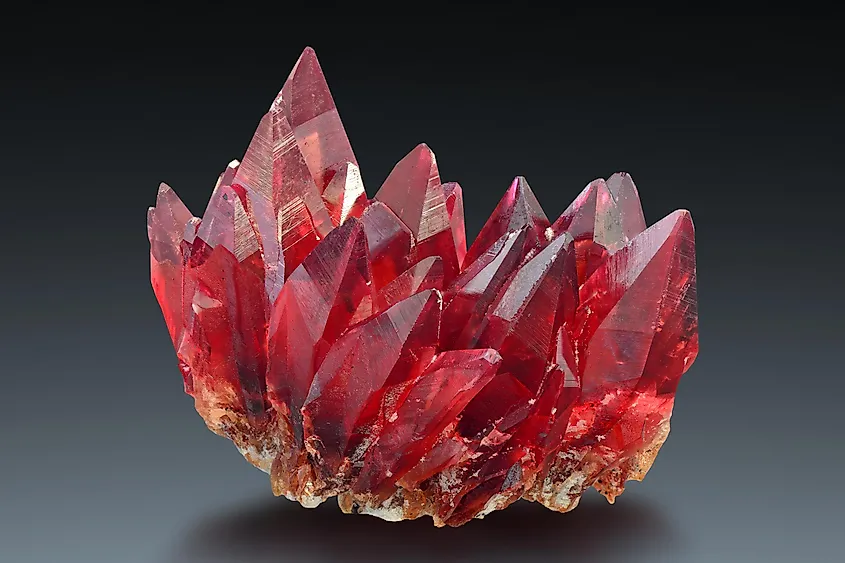
There are several factors threatening the environment and wildlife of the Kalahari Desert. While it is a way of life for many communities, large-scale cattle farming leads to overgrazing, which results in a loss of vegetation. Consequently, this increases the effects of desertification, the process by which fertile land becomes arid. Additionally, ranchers will often seek out and kill carnivores such as jackals to pre-emptively protect their livestock.
The mining of metals and precious stones like diamonds also disrupts the delicate desert ecosystem. Mines strip the land of what little vegetation there is, upsets the balance of the local wildlife, and often results in the displacement of human settlements.
Political Disputes Associated With The Kalahari Desert
Disputes over the Kalahari Desert currently exist between the Botswana government and the San peoples who wish to return to a more traditional way of living. Strict rules that prohibit hunting within the boundaries of national parks and other protected areas have made it almost impossible for the latter to adopt the hunter-gatherer lifestyle of their ancestors.
Territorial disputes also exist between miners and the local Indigenous peoples. Diamonds were first discovered in the Kalahari Desert roughly thirty years ago, leading to the creation of some of the biggest diamond mines in the world. In many cases, these mines were built on San ancestral homeland, ultimately forcing the local population to either relocate to other areas or to live under the occupation of these profit-driven mining companies.
